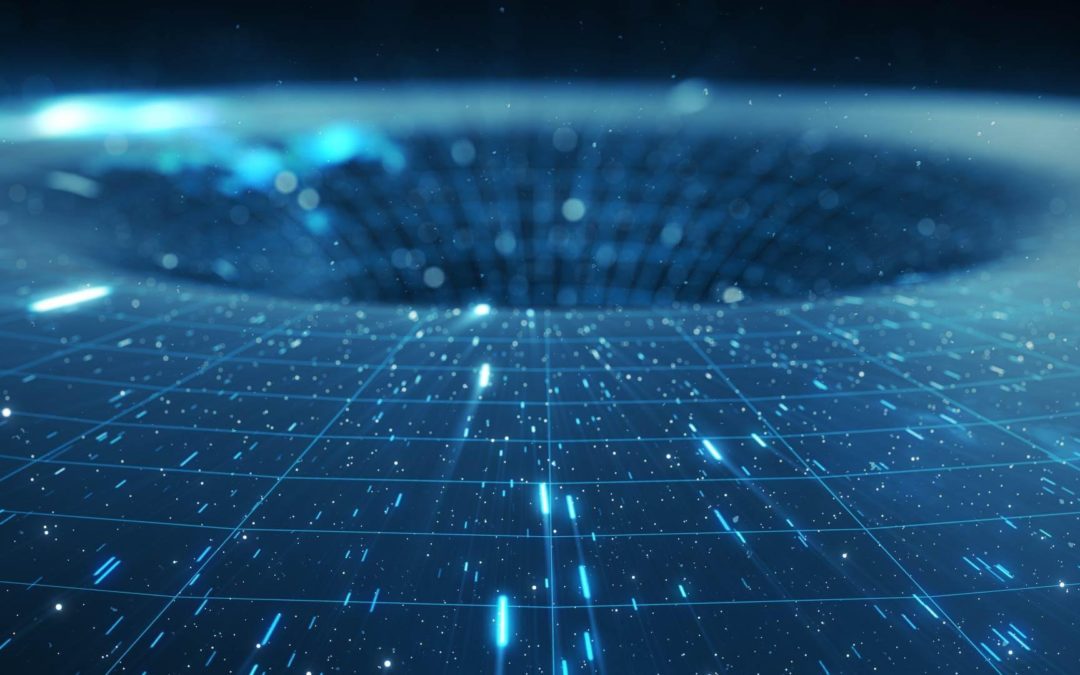The following is a list of basic premises in a few of the leading physics theories, some of which are almost certainly true based on the experimental and mathematical evidence, while others will simply help us in a conceptual exercise to better understand what is really going on in this universe:

1. Einstein states that Gravity is actually a result of the curvature or warping of the fabric of Spacetime, caused by either relative acceleration [a] or attraction between two centers of mass. [b]
2. String Theory postulates that Gravity is a result of a certain state of spin (spin-2) or vibration (oscillation) by subatomic one-dimensional strings. [c] Supersymmetry adds to this description, stating that Gravity also has a superpartner (spin-3/2). [d] Some suggest that the principle of resonance [p] applies to subatomic fields, including Gravity. [k]

3. Loop Quantum Gravity bridges Quantum Physics and General Relativity by quantizing space-time itself, describing it as a literal fabric with a smallest possible size and shape to the component weave. [e] This smallest possible structural volume of space-time is a Planck scale Tetrahedron, and the smallest possible area is a Planck scale equilateral Triangle. [f]
4. Bekenstein-Hawking state that the entropy of a black hole is proportional to the area of its event horizon [j] and the resulting holographic principle states that three-dimensional (and higher 4D, 5D, 6D etc.) information can be contained in a two-dimensional surface. [g] Lee Smolin describes this by explaining that all the quantum information for an orange can be contained in only 1/4 of the surface area of the peel. [f]
5. Spin Networks describe quantum states of the gravitational field on hypersurfaces, [h] which allow for all the points in a vector perpendicular to a holographic surface to be represented in a single point on that surface, and all other vector angles to have actual information representation through projective geometry (similar to how a photograph “projects” 3D information on a 2D surface). [i]

6. Fractal Universe theories describe the functional form of the universe on microcosmic (small) scales to be identical to macrocosmic (large) scales. [l] Some research on this suggests that similar resonance patterns and resulting effects can be found on all scales of the universe. [m]
7. In the Haramein-Rauscher solution to Einstein’s field equations, spin is described as a fundamental property of any curvature or gradient in space-time, and so rotation is naturally entangled with Gravity. [o]
8. The Schwartzchild Proton theory describes each proton (and other subatomic particles) as minature black holes, replacing the “weak force” & “strong force” in physics with gravity acting on a quantum level. [q]
9. Haramein also explores the relationship of the Cosmological Constant to the Schwartzchild Proton, which reveals a network of 10^40 wormholes connected to each proton, forming a distributed mass and energy system across the entire universe. [r]

